No products in the cart.
NEWS
Mastering the Challenge: Growing Celery Successfully
Growing celery is often cited as one of the more demanding vegetables for the home gardener, presenting a unique challenge that rewards patience and careful attention. With its long growing season and specific environmental needs, celery requires a nuanced approach to thrive. However, armed with the right knowledge and techniques, cultivating crisp, flavorful celery in your garden is an achievable and satisfying endeavor. This guide delves into the essentials of successfully growing and caring for celery plants, offering practical tips to overcome common hurdles.
The Specific Needs of Celery
Celery (Apium graveolens) isn’t your average easy-going garden crop. It demands consistent moisture, specific temperature ranges, and nutrient-rich soil to produce those desirable crunchy stalks. Its reputation for difficulty stems from its low tolerance for both heat and cold extremes, coupled with a prolonged period from planting to harvest. Understanding these fundamental requirements is the first step toward success.
Laying the Foundation: Soil, Light, and Water
Creating the ideal environment is paramount for celery.
Soil and Nutrients
Celery thrives in fertile, well-draining soil that is rich in organic matter. Before planting, amend your soil generously with compost or aged manure. Celery is a heavy feeder, particularly requiring nitrogen. A soil pH between 6.0 and 7.0 is optimal.
Light and Temperature
While often thought of as a cool-season crop, celery has a complex relationship with temperature. It requires a long period of relatively moderate temperatures (around 60-70°F or 15-21°C) for optimal growth. Extreme heat can cause stalks to become stringy or bitter, while cold snaps below 50°F (10°C) can cause the plants to bolt (flower prematurely). Choose a planting location that receives full sun to partial shade, especially in hotter climates where afternoon shade can be beneficial.
Watering Needs
Consistent moisture is perhaps the single most critical factor. Celery plants must never be allowed to dry out. Inconsistent watering leads to tough, bitter stalks. Aim for consistently moist, but not waterlogged, soil. Mulching around plants helps retain soil moisture and suppress weeds.
Proper Spacing
Giving celery plants adequate space is vital for air circulation and stalk development. Space plants about 6-10 inches (15-25 cm) apart in rows, with rows spaced 2-3 feet (60-90 cm) apart. Proper spacing minimizes competition for nutrients and water and helps prevent the spread of diseases.
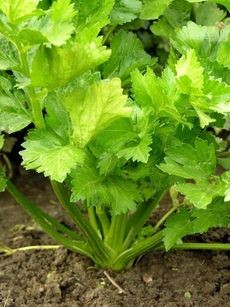 Celery Growing In The Garden
Celery Growing In The Garden
Cultivation Techniques for Quality Celery
Beyond the basic requirements, specific practices can significantly improve your celery harvest.
The Art of Blanching Celery
Many gardeners blanch their celery stalks to achieve the pale color and tender texture commonly found in supermarkets, as well as reduce bitterness. Blanching involves shielding the lower parts of the stalks from sunlight for the last few weeks of growth. This can be done by wrapping the lower stalks with newspaper, cardboard, or using hilling soil around the base of the plant. Ensure the tops of the stalks are left exposed to sunlight for photosynthesis.
 Celery Being Blanched In The Garden Wrapped In Newspaper
Celery Being Blanched In The Garden Wrapped In Newspaper
Regrowing Celery from Kitchen Scraps
An exciting way to get a head start or simply observe plant growth is by regrowing celery from the base you buy at the grocery store. Simply place the bottom inch or two of the celery base in a shallow dish of water in a sunny spot. Once roots and new leaves emerge, you can plant it in soil. While this method might not yield full, robust stalks like growing from seed, it’s a fun and easy way to get some fresh celery greens.
 Glasses Of Regrowing Celery Bottoms
Glasses Of Regrowing Celery Bottoms
Exploring Different Celery Types
While stalk celery is most common, other varieties offer unique flavors and uses. Leaf celery (also known as cutting celery) is easier to grow and primarily cultivated for its flavorful leaves and thinner stems, often used as an herb. Wild celery, or smallage, is another type with historical uses, known for its strong flavor. Understanding these varieties can expand your gardening and culinary horizons.
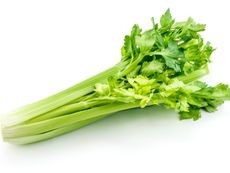 Leafy Green Celery Stalk
Leafy Green Celery Stalk
Managing Pests and Diseases
Despite careful cultivation, celery can be susceptible to certain pests and diseases. Vigilance is key to managing these issues effectively.
Common Diseases
Fungal diseases like Cercospora blight (early blight) and Late blight are common, causing spots on leaves and stalks. Stalk rot can also affect the base of the plant. Adequate spacing, avoiding overhead watering, and ensuring good air circulation are preventative measures. Root knot nematodes, microscopic worms, can damage roots, leading to stunted growth; improving soil health and rotation can help.
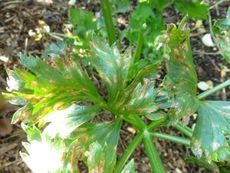 Celery Cercospora Blight Disease On Celery Crops
Celery Cercospora Blight Disease On Celery Crops
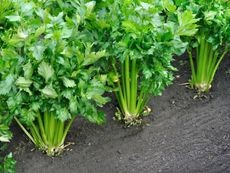 Rotting Celery Stalks In The Garden
Rotting Celery Stalks In The Garden
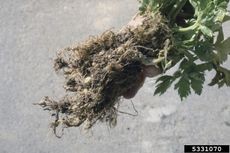 Celery Root Knot Nematode Info
Celery Root Knot Nematode Info
Dealing with Pests
Caterpillars, such as those of the black swallowtail butterfly, are sometimes found on celery. While they feed on the leaves, a healthy plant can often withstand some feeding. Consider handpicking caterpillars or using row covers if infestations are severe, prioritizing integrated pest management approaches.
 Caterpillar On A Celery Plant
Caterpillar On A Celery Plant
Harvesting Your Celery
Knowing when and how to harvest ensures the best flavor and texture.
Harvesting Celery Stalks
Celery is typically ready for harvest in 90-120 days from transplanting, depending on the variety. You can harvest outer stalks individually as needed, allowing the inner stalks to continue growing, or harvest the entire plant by cutting it at the base when it reaches the desired size.
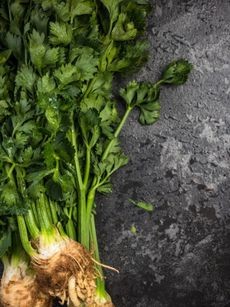 Harvested Celery
Harvested Celery
Saving Celery Seeds
If you allow a celery plant to bolt in its second year (celery is biennial), it will produce flowers and eventually seeds. Saving these seeds requires letting the plant mature fully and dry on the stalk before collecting the seed heads.
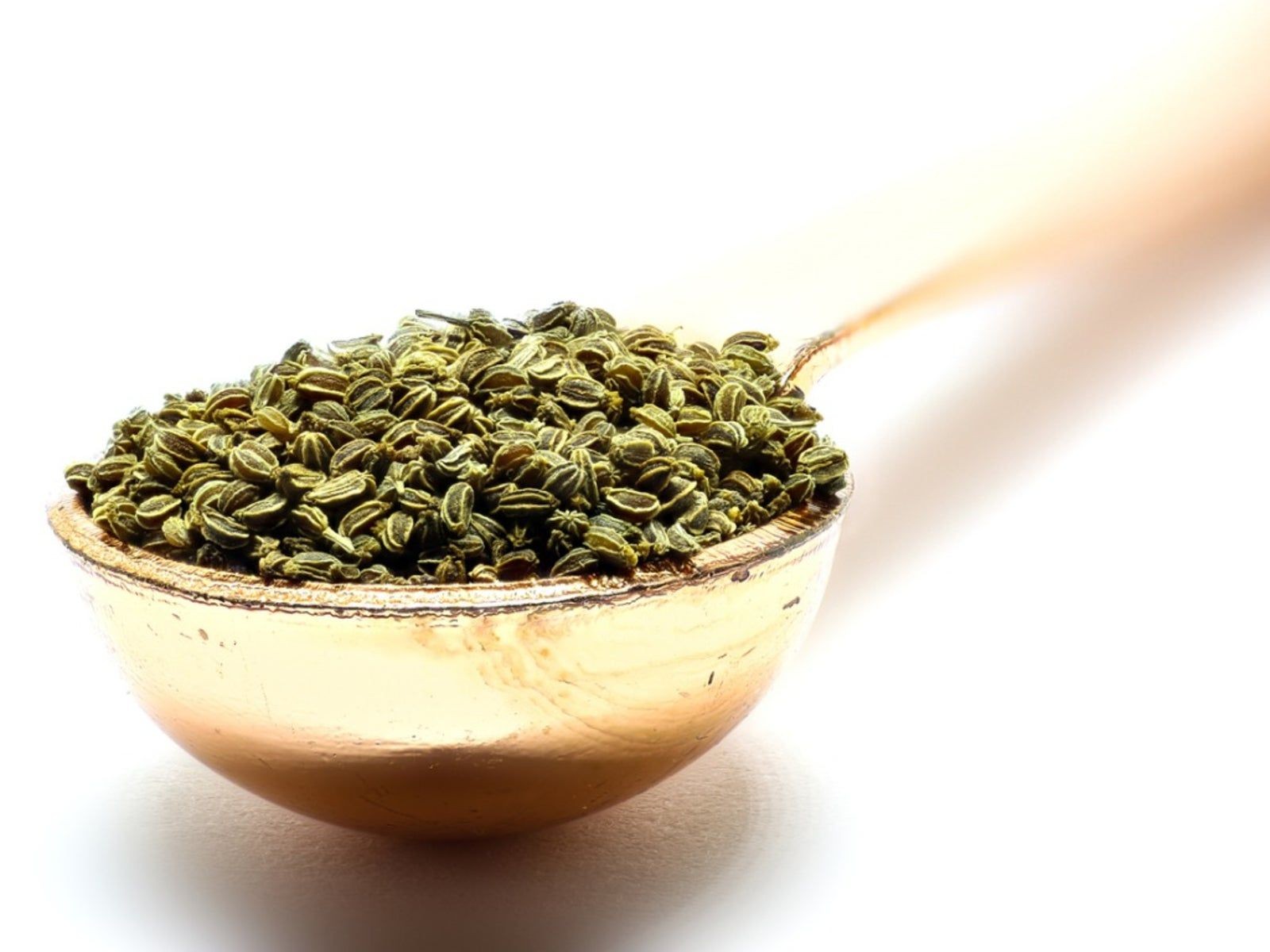 A Spoonful Of Celery Seeds
A Spoonful Of Celery Seeds
Alternative Growing Methods and Companion Planting
For those with limited space or challenging climates, consider growing celery in containers. This allows greater control over soil, water, and temperature. Ensure pots are large enough to accommodate the plant’s root system and drain well. Companion planting can also benefit celery; certain plants deter pests or improve soil conditions, while others can compete for resources.
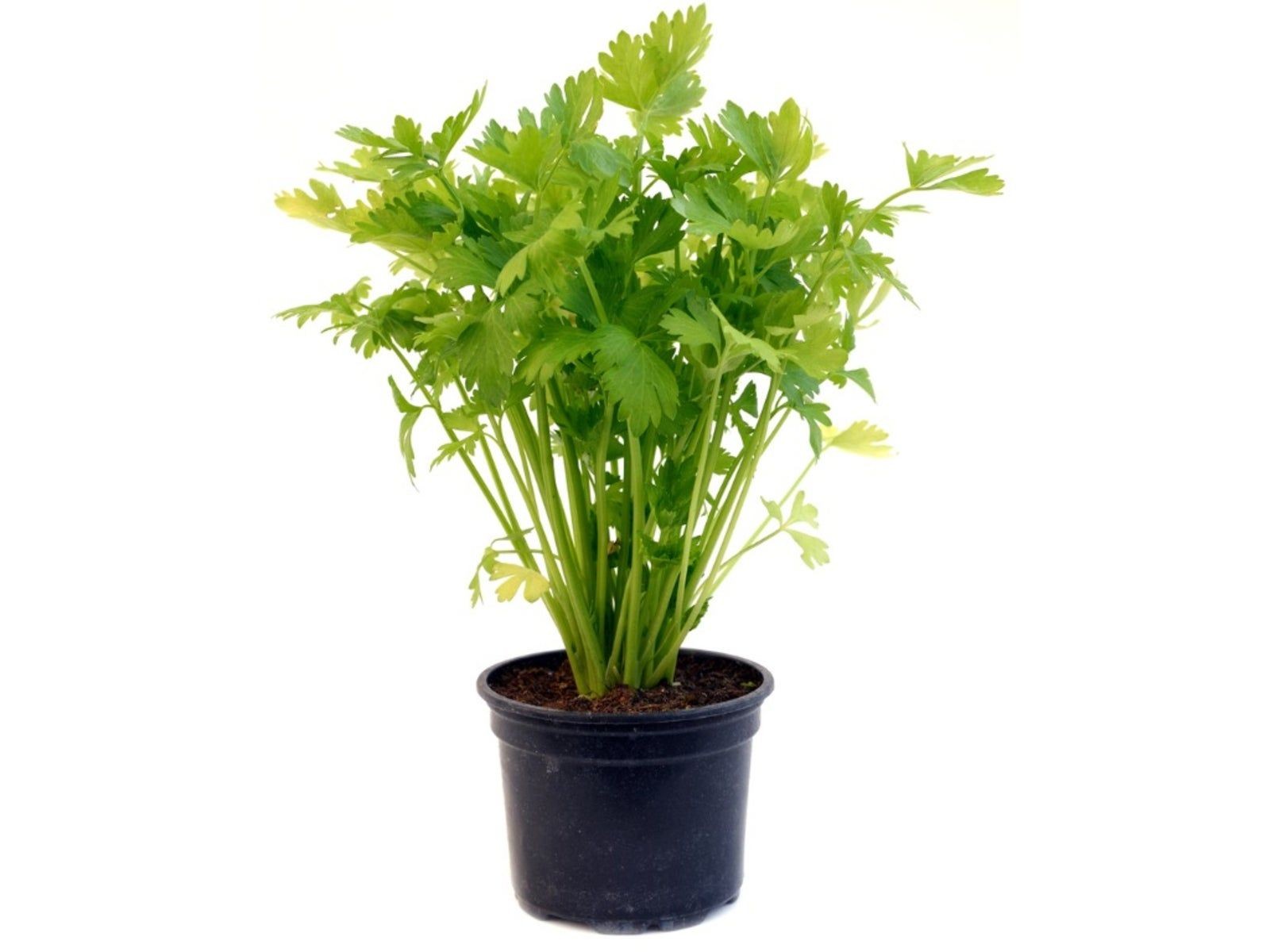 Container Grown Celery
Container Grown Celery
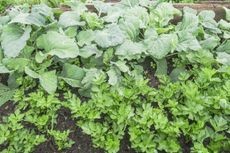 Celery In Garden Next To Companion Plants
Celery In Garden Next To Companion Plants
Conclusion
While growing celery presents a notable challenge, it is far from insurmountable. By understanding its specific needs for consistent moisture, moderate temperatures, and nutrient-rich soil, and by employing techniques like blanching and pest management, home gardeners can successfully cultivate this rewarding crop. The journey from seed to stalk is a testament to the gardener’s dedication, yielding fresh, flavorful celery that far surpasses store-bought options. Don’t shy away from the challenge; embrace it with knowledge and watch your celery thrive.
References
- General Horticultural Practices: Vegetable Cultivation Guide
- Plant Disease Management: Fungal and Bacterial Pathogens in Leafy Greens
- Pest Control in Edible Gardens: Integrated Pest Management Strategies
- University Extension Publications on Celery Cultivation



